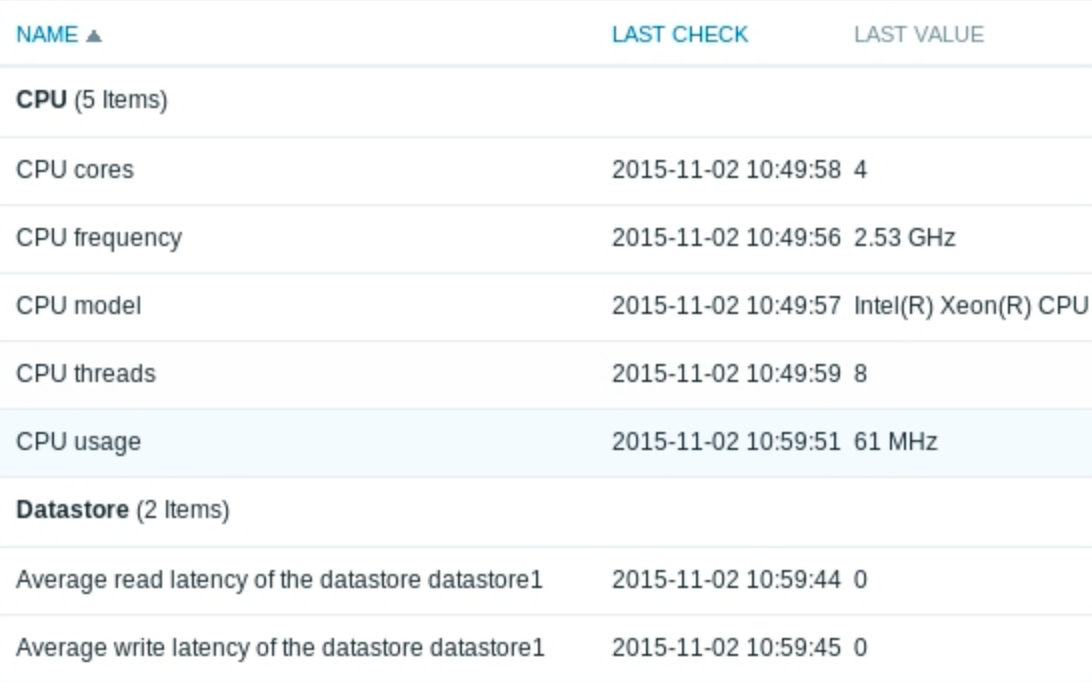With some groups and hosts automatically created, let's see what data they're collecting. Navigate to Monitoring | Latest data and select Hypervisors in the Host groups field. Then, click on Filter:

There'll be more items for each hypervisor. Some of them might not have data yet, but a bit of patience should reveal all of the details.
Datastore items might appear later; they're discovered by the datastore discovery LLD rule in Template VM VMware Hypervisor with a default interval of one hour.
Now, filter by hypervisor virtual machine group in the Host groups field or by a single discovered virtual machine in the Hosts field:

Again, there should be more items, and some could still be missing values. They all should eventually get populated, though.
Disks, filesystems, and interface items might appear later; they're discovered by the...



